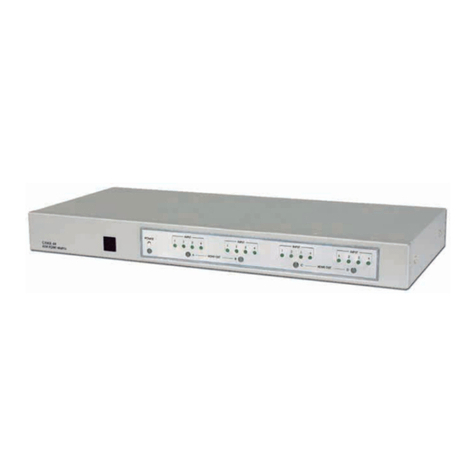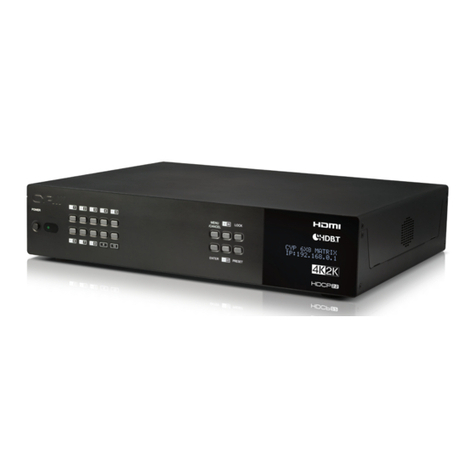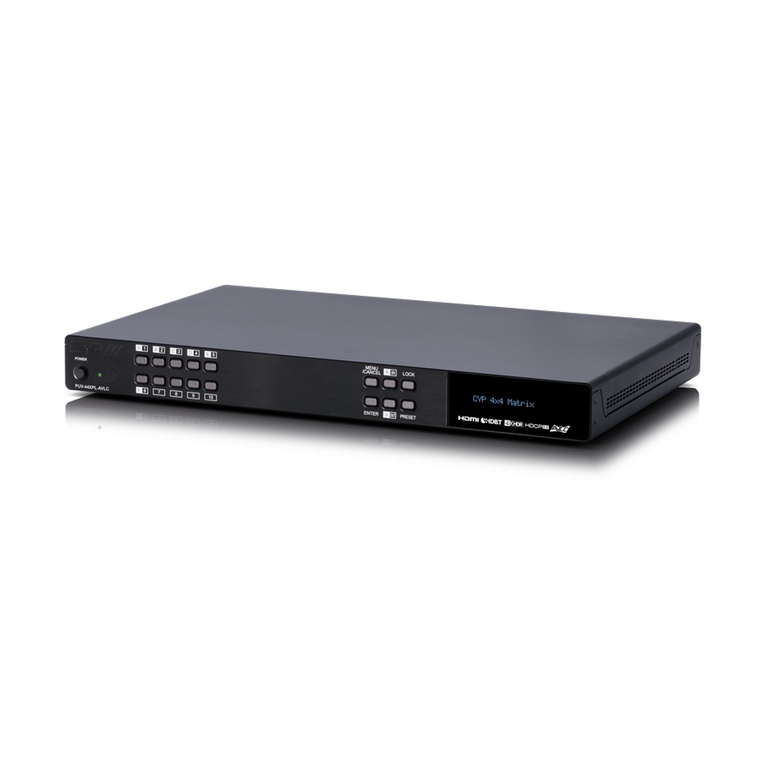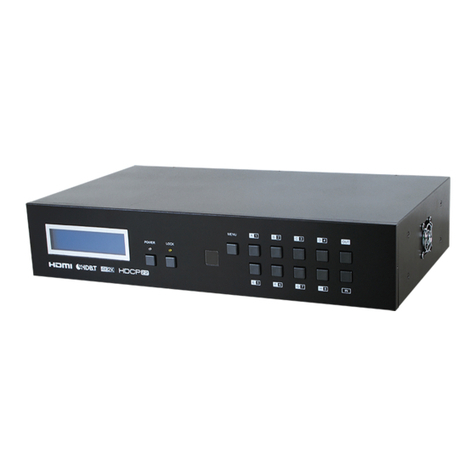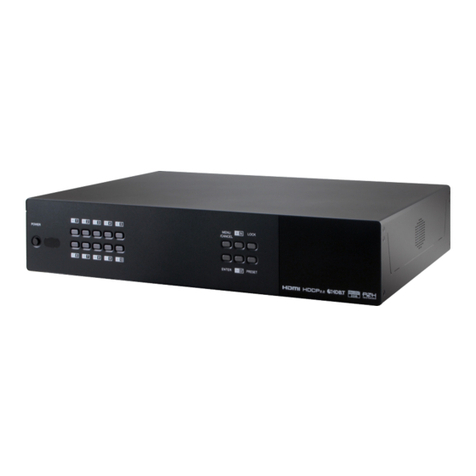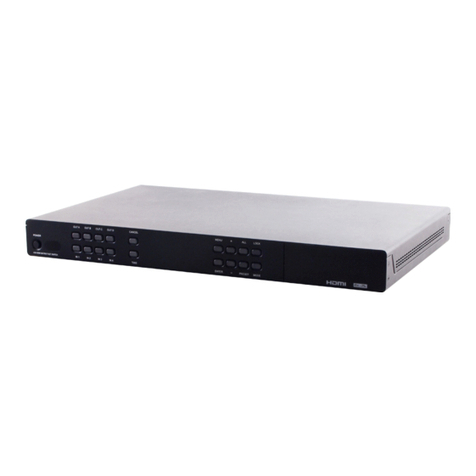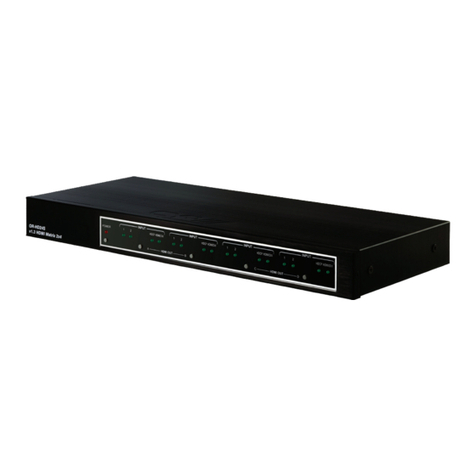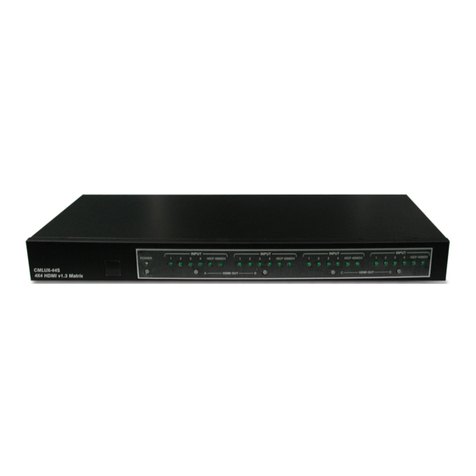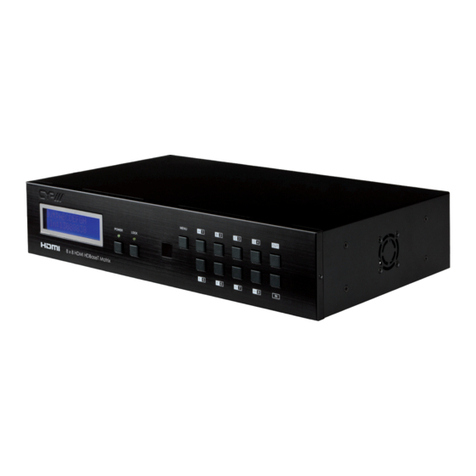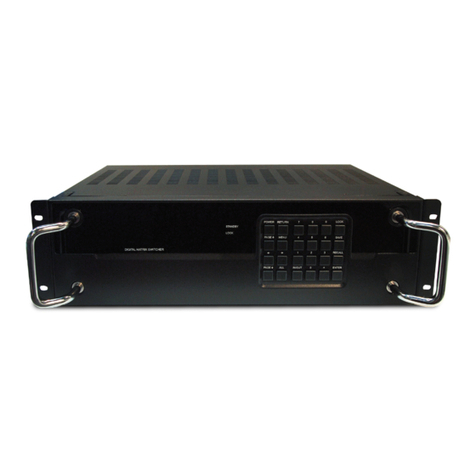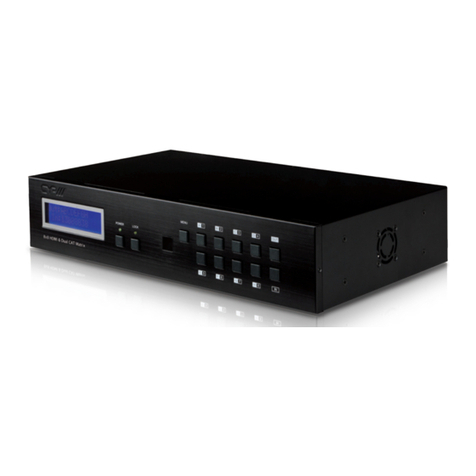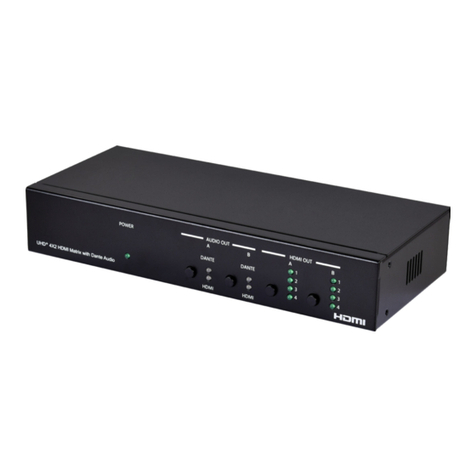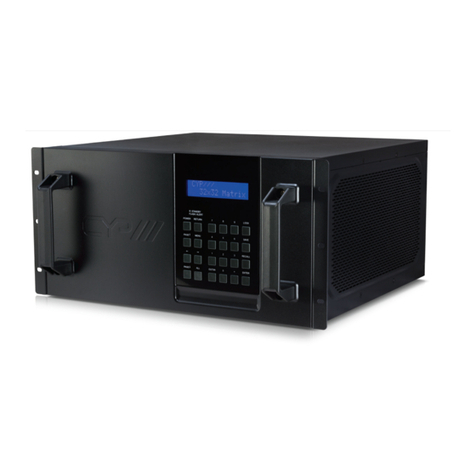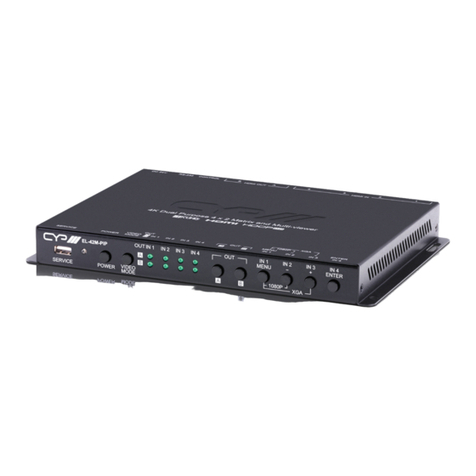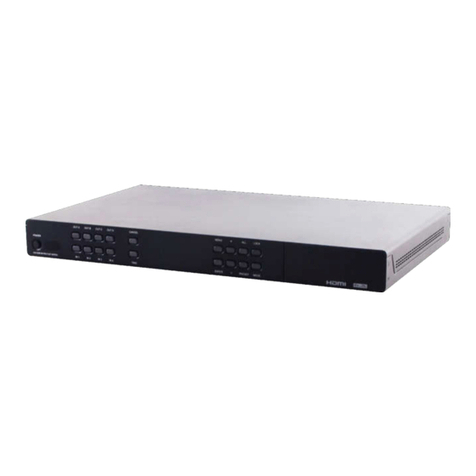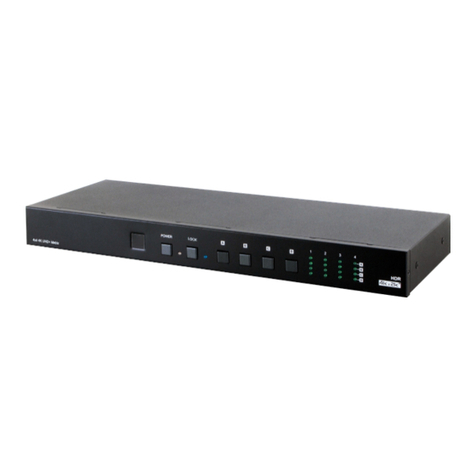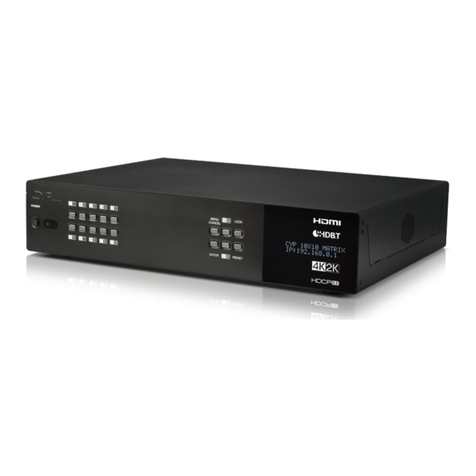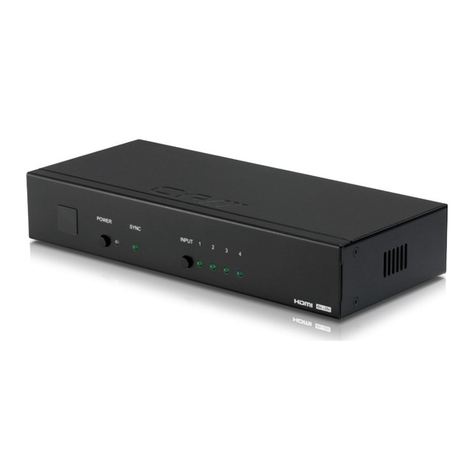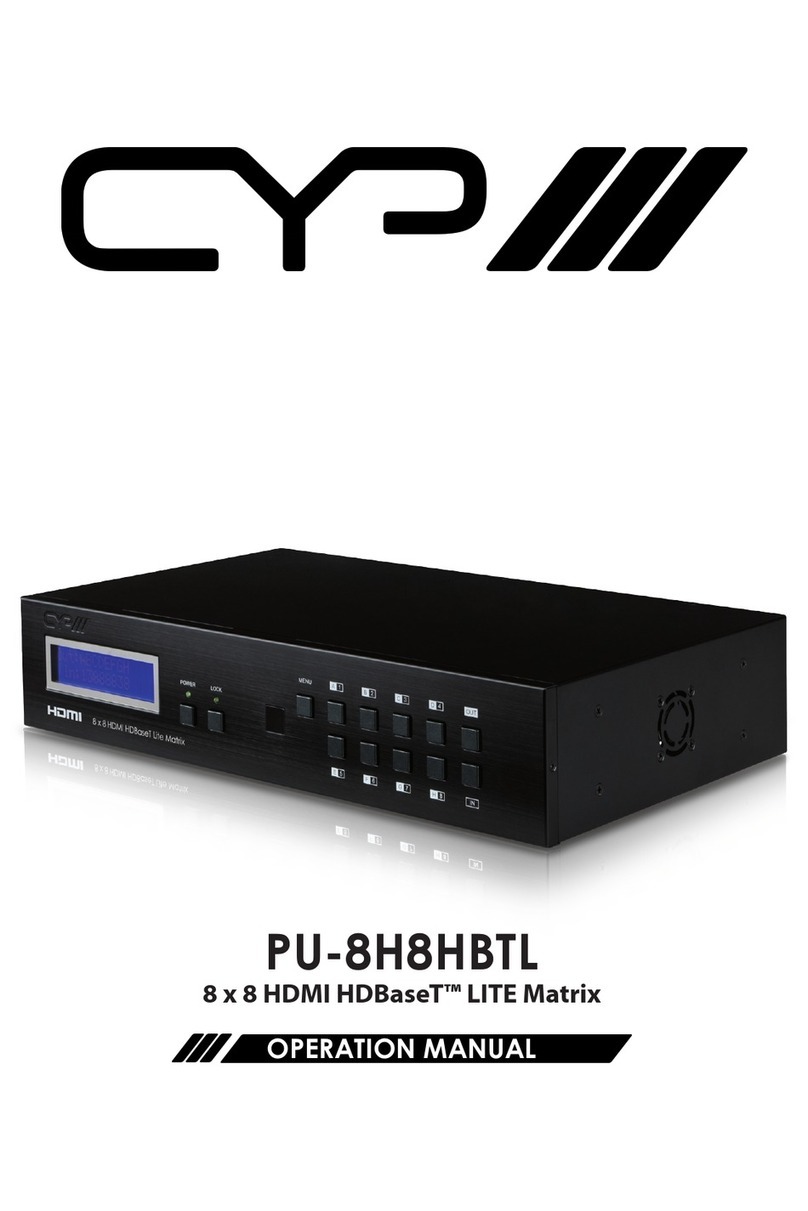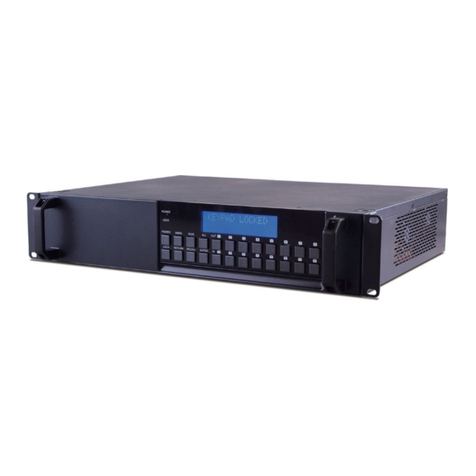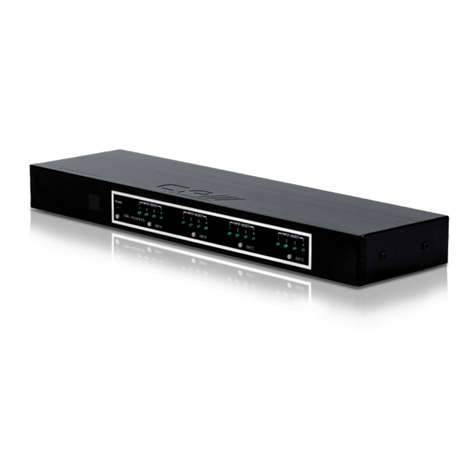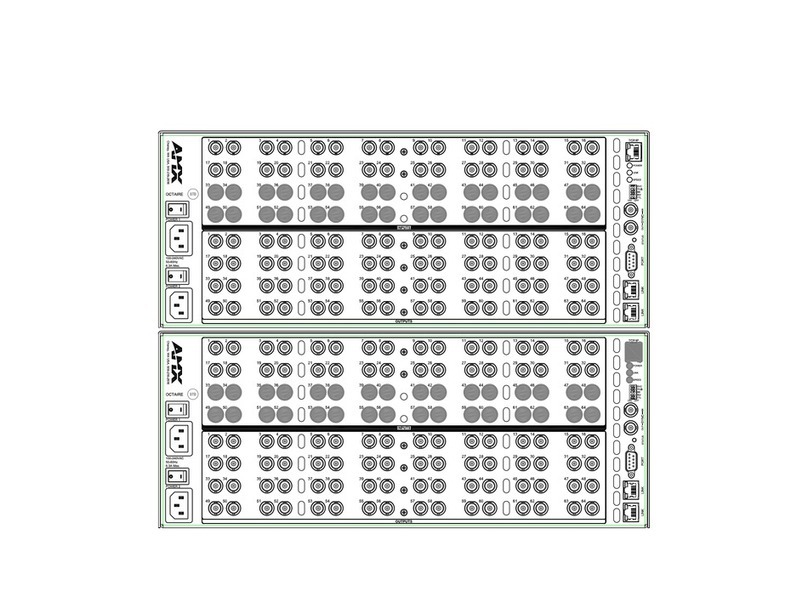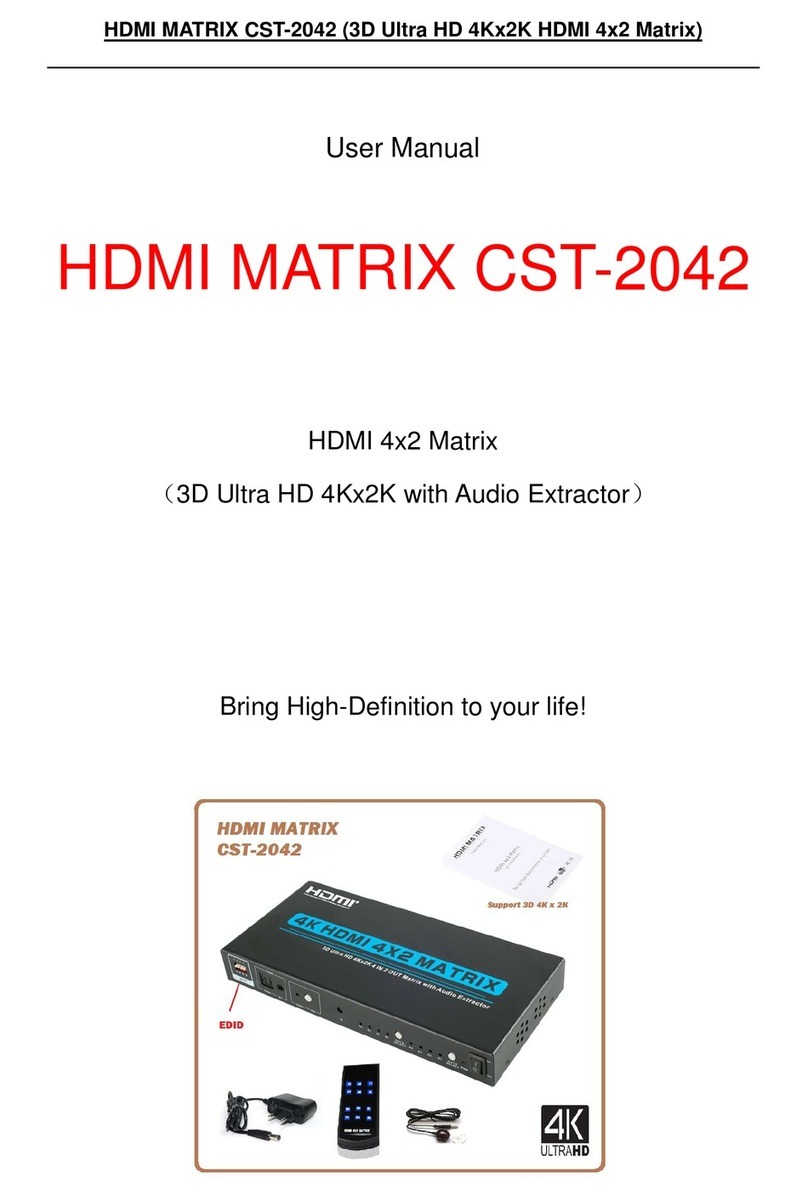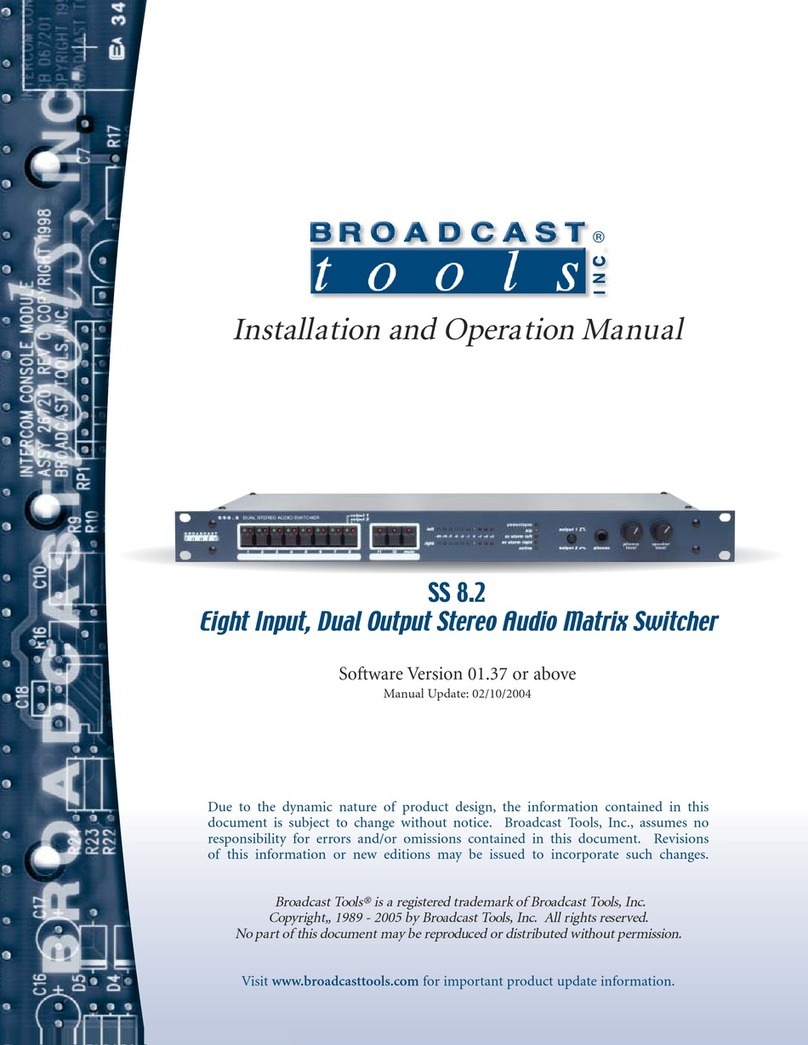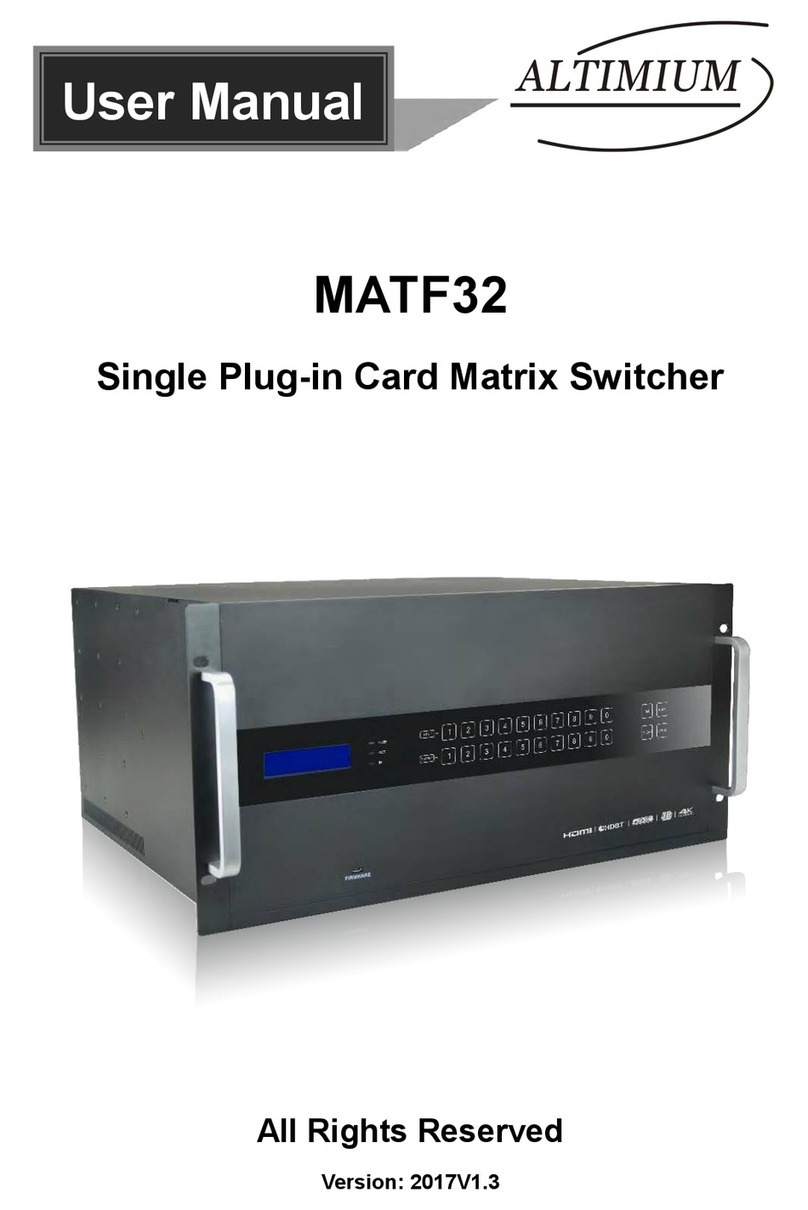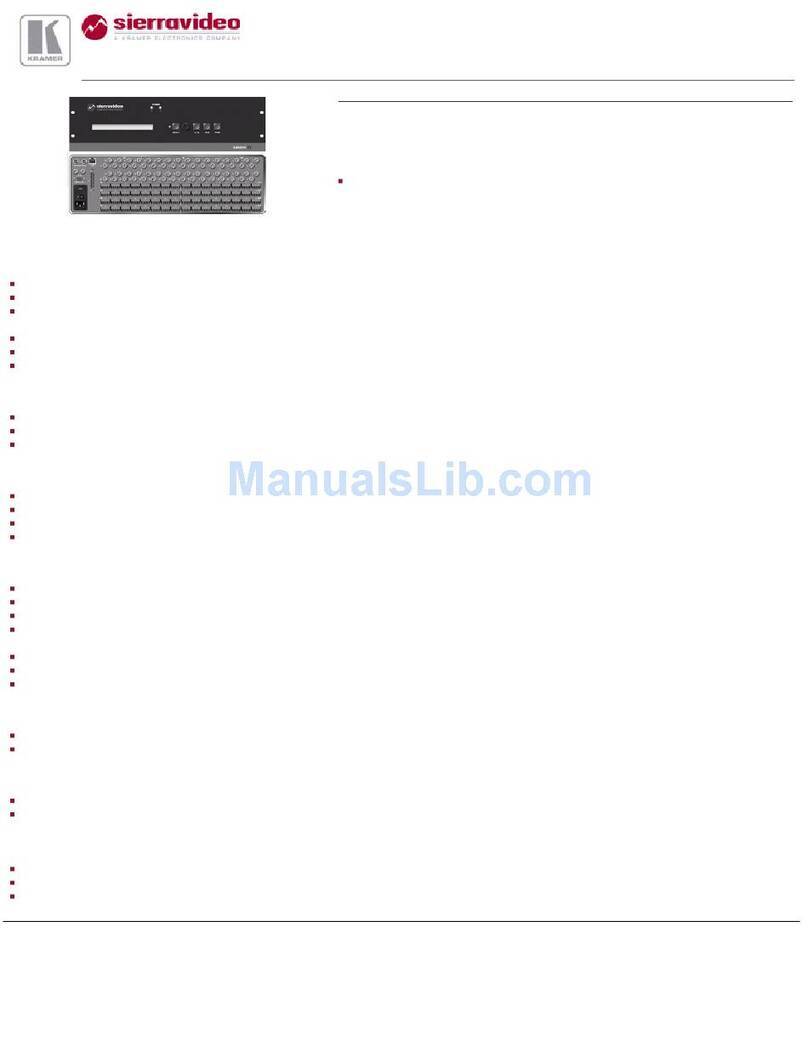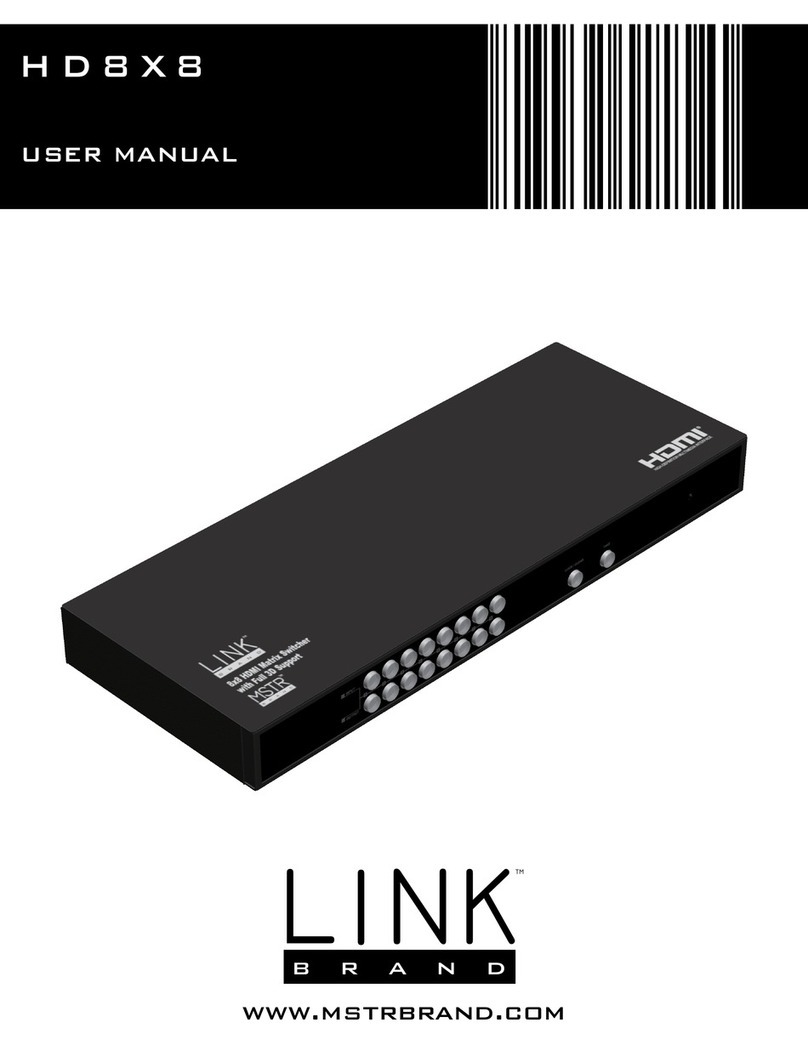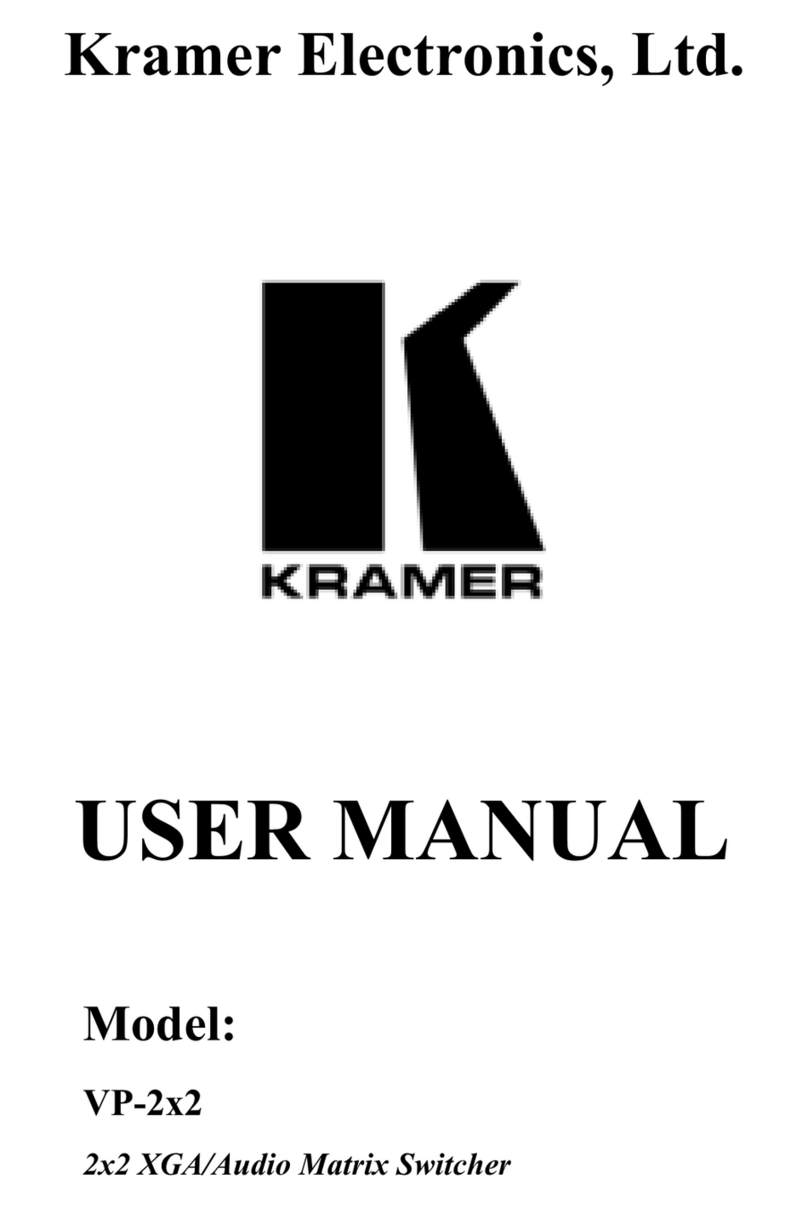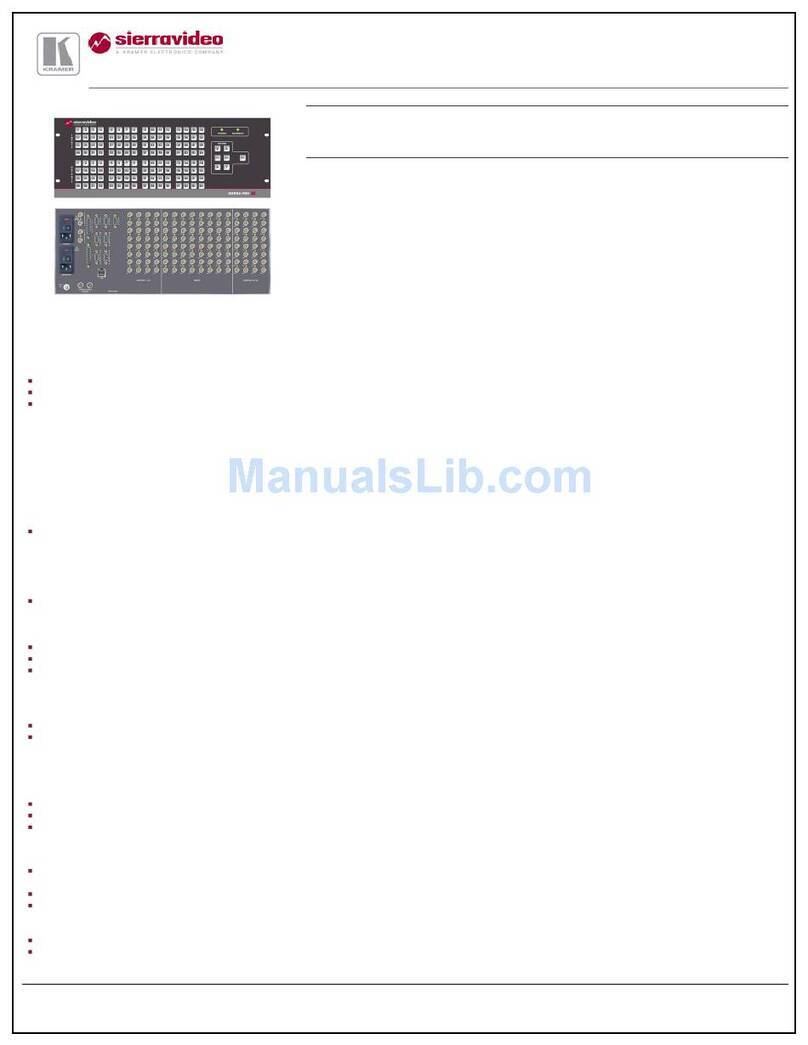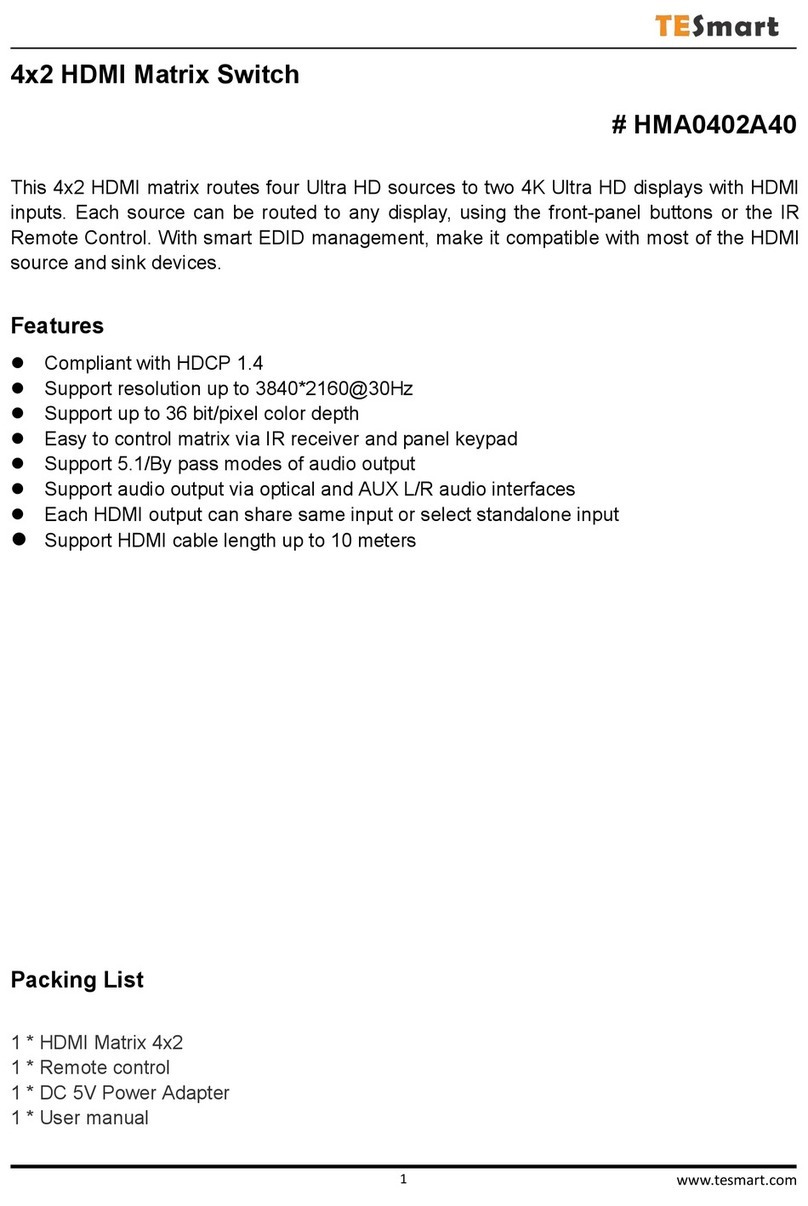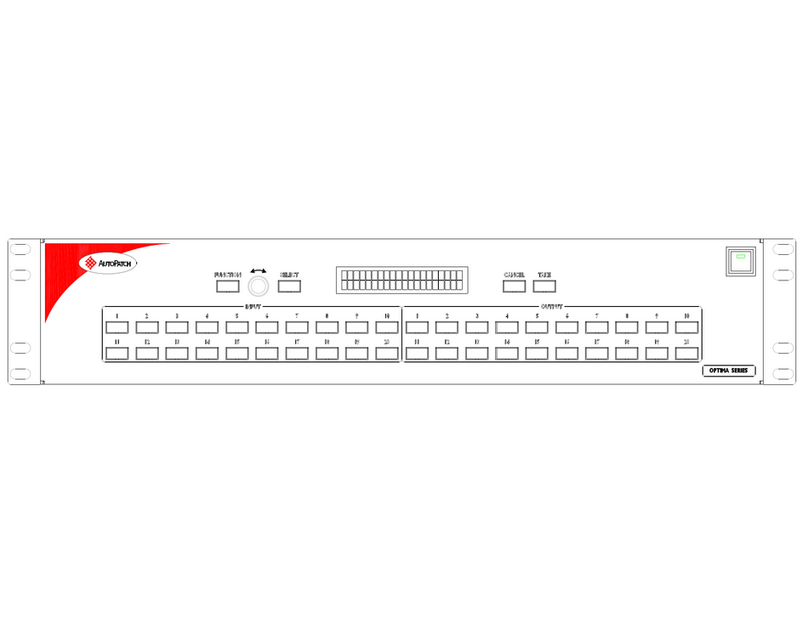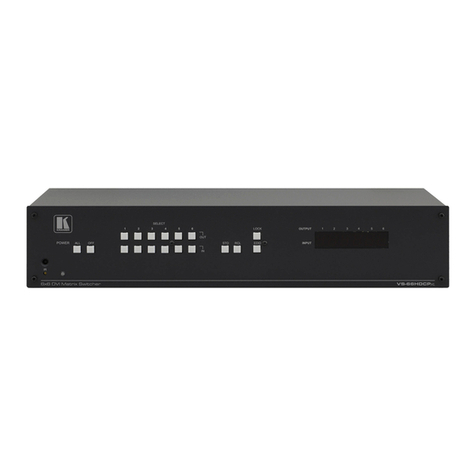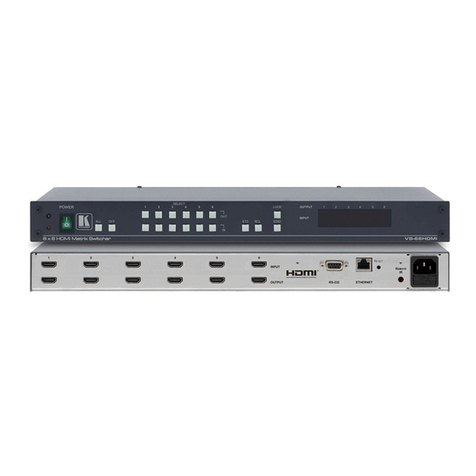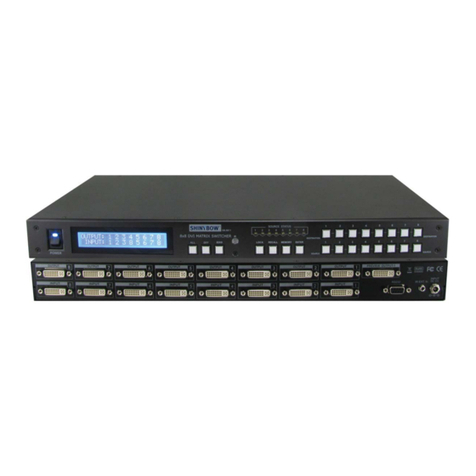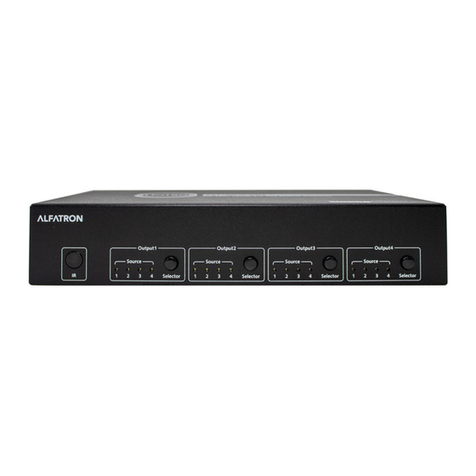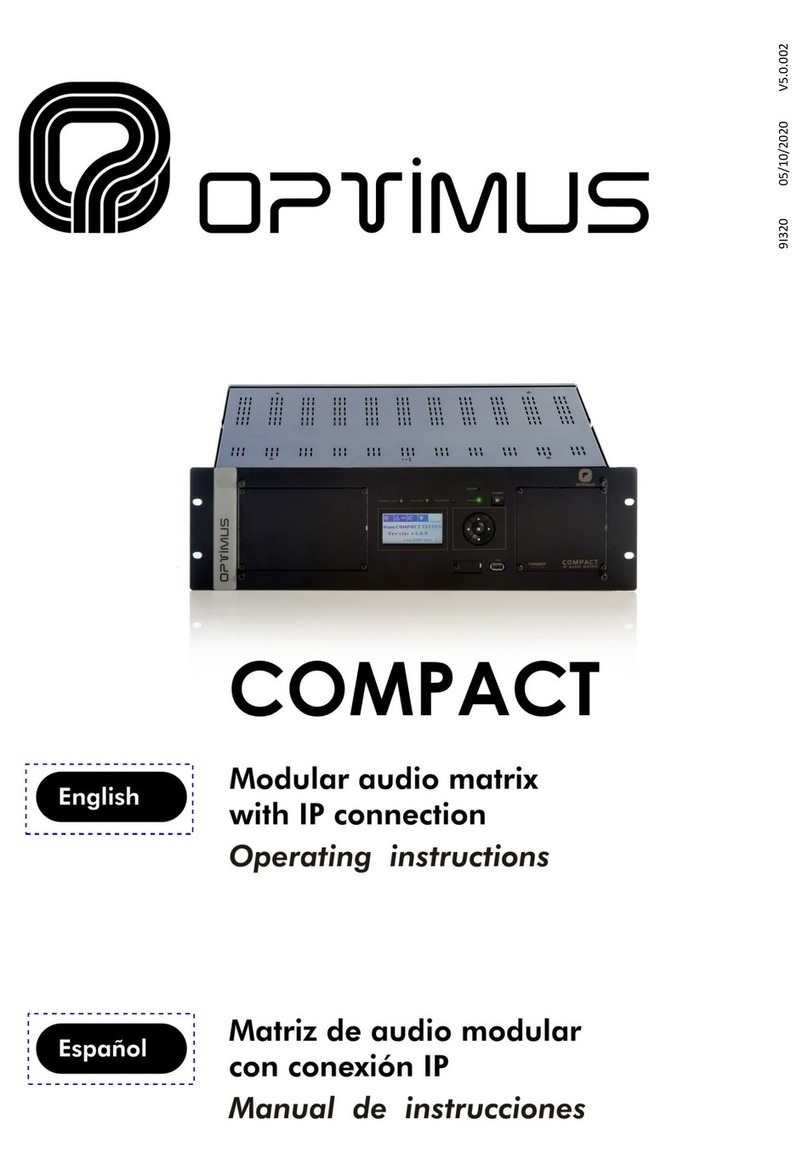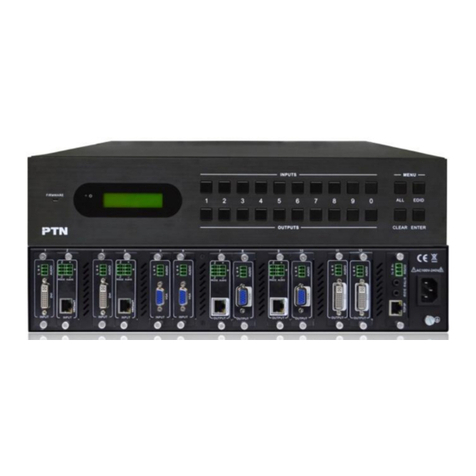7
4. SYSTEM REQUIREMENTS
Up to 16 HDMI/DVI/CAT5e/6/7 or VGA source devices (dependent on
module conguration) connected with appropriate cables.
Up to 16 displays (TV or monitor) or AV receivers, equipped with HDMI/
DVI/CAT5e/6/7 connection (dependent on module conguration)
connected with appropriate cables
Industry standard CAT5e/6/7 cable (for CAT5e/6/7 inputs/outputs)
Compatible PoC HDBaseT™ Transmitters/Receivers for CAT5e/6/7
Input/Output modules
5. FEATURES
HDMI, HDCP 1.1 and DVI 1.0 compliant
Interchangeable input and output modules
Input and output module types can be mixed and added in multiples
of 8 from 8x8 (1 Input module, 1 Output module) up to 16x16 (2 Input
modules, 2 Output modules) with HDMI, DVI, CAT5e/6/7 and VGA
(Input Only) connection types
Supports passthrough of LPCM 7.1CH, Dolby TrueHD, Dolby Digital
Plus and DTS-HD Master Audio
Supports a wide range of PC and HDTV resolutions from VGA to
WUXGA and 480i to 1080p and 4Kx2K (dependent on module
conguration)
Supports control of the matrix via IR, RS-232, Telnet and Web GUI
controls
Dual removable power supply units, supports replacement without
any matrix downtime
Supports HDMI cable input and output lengths of up to 15m each way
(1080p@8bit resolution) or 10m (1080p@12bit resolution)
Supports 3 EDID modes:
- Standard mode: Factory Default
- Automatic mode: reads the EDID settings from the display
connected to the lowest numbered output port
- Manual mode: Can assign any input to any output port
Supports CAT5e/6/7 cable input and output lengths of up to 100m
(1080p) or 70m (4Kx2K) dependent on module conguration
5Play™ convergence: HD Video, HD Audio, PoC, Ethernet & Control (IR &
RS-232)
4Play convergence: Video, Audio, PoC & Control (IR & RS-232)
3Play convergence: Video, Audio & Control (IR & RS-232)
